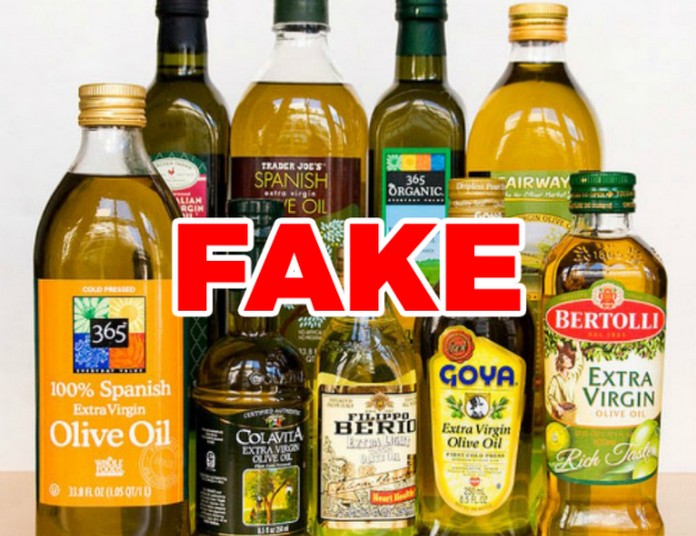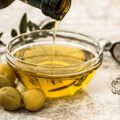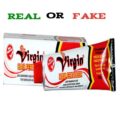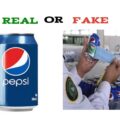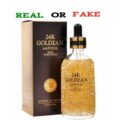Olive oil comes from olives, the fruit of the olive tree. Olives are a traditional crop of the Mediterranean region. People make olive oil by pressing whole olives. People use olive oil in cooking, cosmetics, medicine, soaps, and as a fuel for traditional lamps. Olive oil originally came from the Mediterranean, but today, it is popular around the world.
In Nigeria, olive oil is most commonly used in spiritual or religious meetings. In the bible olive oil is mentioned several times as the oil used for lighting lamps, for anointing, as part of the grain offerings, to anoint Kings, to sanctify priests and the Tabernacle and all its furnishings. Olive oil was also used in cooking. Olive trees grew in Israel, and the people in that region used the oil from pressed olives as people in other cultures might have used butter or animal fats.
How to Spot Fake Olive oil
Most olive oils last 18–24 months from the time they’re bottled. Extra virgin olive oils are less processed and usually last a bit less, around 12–18 months from the time they’re bottled. Beyond these timespans, olive oils may develop acrid or bitter notes, which may show up in your cooking in ways you may not enjoy.
Some olive oil bottles state a bottling or best-by date. If you don’t see these, it may be a good idea to tag your bottles with the date of purchase. This can help you have some sense of how long it has been sitting in your pantry.
However, fake olive oil tend to become rancid very quickly with a corresponding bad taste and smell. According to a Forbes report, 80% of the Italian olive oil on the market is fraudulent. Some experts think that percentage is an exaggeration. Others believe that the bigger problem is poor quality olive oil, deliberately mislabeled as virgin or extra virgin. In any case, it’s likely that when you buy olive oil, you’re not buying what it says on the label.
Olive oil is simply the juice extracted from fresh olives—no chemicals, heat, or further processing. To qualify as extra-virgin, the highest grade, the oil has to pass lab analysis and sensory tests set by the Madrid-based International Olive Council. But in most developing countries including Nigeria, fraudsters just bottle vegetable oil and label them olive oil or extra virgin oil. Goya Extra Virgin Olive Oil a cold-pressed olive oil native to Andalusia in Spain is the most counterfeited brand of olive oil in Nigeria, today it is quite difficult to determine whether your Goya extra virgin olive oil is real or fake.
So how can you tell if the olive oil is 100 percent authentic? According to Katerina Mountanos, the Founder & CEO of Kosterina Olive Oil these simple ways will help you spot a fake:
- Smell and Taste It
True olive oil should smell fresh, like grass or something fruity. Avoid something that smells musty or rancid, or even odorless. In addition to smell, when you’re tasting olive oils, you should recognize hints of grass, fruit, and almond. Plus, it’s a good sign if the oil tastes a bit bitter (but not too much) and also has a peppery taste as well (you might be able to feel it in the back of your throat). Don’t worry so much about color—it can be everything from a greenish or straw hue.
- Look at the Batch Date
This is not the same as an expiration date. Look at the bottle’s label for a “batch date,” “bottled date” or or “harvested date” that’s within 18 months. If it only has an expiration date and nothing else, you might want to consider not purchasing it because you could be purchasing olive oil that has been produced or bottled years before.
- Pay Attention to How It’s Bottled
Olive oil should be stored in a dark, cool place, so if the bottle is clear, you’ll want to stay away from that brand. A darker bottle will help preserve the olive oil. Additionally, the olive oil should be packaged in a glass bottle—a plastic bottle is too porous to protect if from heat, light, or moisture. Since you want to consume the olive oil pretty quickly after opening the bottle, don’t feel pressured to buy a big bottle in order to save money.
- Read Labels Carefully
Just because the olive oil says it was “packed” or “bottled” in a certain location, doesn’t mean the olives were grown there, or even that the oil was produced there. Olive oil could be made in a different country and then sent to Italy or Greece for bottling. Look at the label to find out exactly where the olive oil was produced. In addition, the label should say “extra virgin,” and avoid any terms like “pure,” “light,” or “olive pomace oil”—that means it’s been chemically refined.
- Price
“Early harvest” olive oil (which has the highest level of healthy polyphenols) is oil squeezed from the olive before the olive is ripe. An unripe olive yields much less olive oil but much higher quality oil. Since the manufacturer yields much less oil it makes the “juice” more expensive. If you’re buying at the grocery store, pay attention to the label and avoid bargain prices. Unfortunately, if it’s cheap, it might not be genuine olive oil—so think of it as an investment in your health! . ALSO READ: How to Spot Fake Palm Oil


